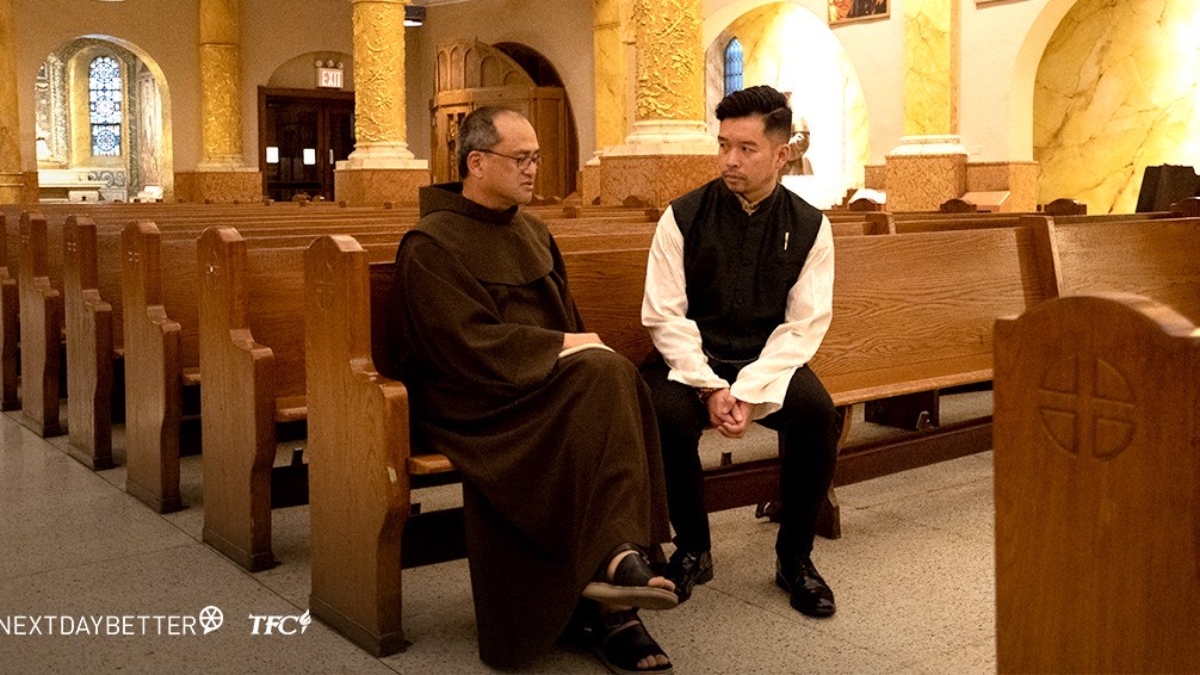Written by: Demi Guo and Michelle Ahn
Kalaya’an means “freedom” in Tagalog. That’s as much as I know, as I shake hands with him and sit down in the Kusina Pinoy Bistro in Queens. He chose this name for himself, to reflect his roots and faith.
He is one of the six pinoys featured in “Intersections,” a series of mini-documentaries profiling Filipino Americans across the diaspora. A joint venture by The Filipino Channel (TFC) — a network that broadcasts shows from ABS-CBN, the Philippines’ biggest media conglomerate, to overseas pinoys — and new media platform Next Day Better, “Intersections” was released throughout the month of October on the latter’s YouTube channel.
Ryan Letada, the CEO of Next Day Better, founded the platform because he found other media to be too superficial in its portrayal of Filipino stories, especially given the community’s increasingly diasporic identity.
“How do complexities push communities forward?” he said. “We want to explain who we are becoming.”
Moving forward, his goal is to cover the stories of all migrants, including those from Puerto Rico, and find the universal appeal in all of them. “I want us to become the destination for migrant storytelling,” he said.
This Filipino American History Month, he is starting with these testimonies. Bound up by personal and cultural patterns, they reflect how Filipinos are easily the most diverse Asian demographic in the United States.
Kalaya’an Mendoza told me how important it is for them to speak for themselves. “Intersections,” in bite-sized new media profiles, shows me exactly that.
Indigenous Allyship
EJ David, a psychology professor who was also profiled, immigrated from the Philippines to a town called Barrow, Alaska. “I went from a tropical island country and city of millions and millions of people to a town of about four thousand people right next to the Arctic Ocean,” he said.
He came with expectations. “The dream is to come to the United States,” he said. He wanted to be just as American as anyone else, shedding himself of the Philippines and his accent. “How it should be,” he said.
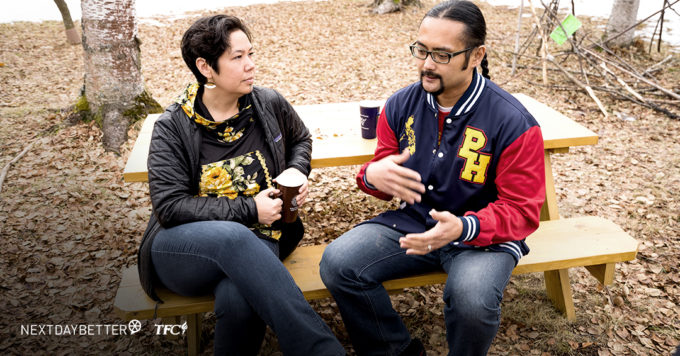
Fast forward a little bit, and the questions in his mind changed. “Why did I inferiorize my culture and see American culture as so superior?” he asked. “That was the beginning of me trying to grapple the intersections of me being an immigrant living in this really colonized state as well.” Barrow is traditionally indigenous, giving him context to grapple, also, with the fear of becoming complicit in continuing the post-colonization process.
“In Alaska, we are the largest immigrant group. Hawaii too,” he said. “We have this responsibility to know that we live in indigenous land, that these are colonized lands.”
This is a conversation he has often with his wife, who is Athabaskan.
“My son is literally at the intersection of his father’s immigrant identity and his mother’s indigenous identity,” he said. They tell their children that they are a hundred percent Athabaskan and Filipino, not half of each — “Filibaskan,” down to their food. Filipino nilaga is cooked with beef, but in their Alaskan home, they use moose. They call their grandmothers “lola” and “setsoo.”
The colonized mindset is not the only cycle they are breaking for the next generation. There is also intergenerational trauma. “Our ancestors were wounded,” he said, “and by continuing their fight today, I’m giving them a chance to heal also. My children, I hope when they get older and look back to this time and see what is happening right now, when they read the history books and see that we had this president, and this president did this and this, and look at me and think, ‘What did my dad do when this is happening?’ that their dad fought.”
Far From Home
Mary Manda’s visa expires in five years. She says she’s glad she could come teach in the United States at all, filling up a teacher shortage in rural America, but sad at the thought of having to leave.
Her background in teaching small groups of students with special needs came in handy when she went to Shelby, Missouri. It synced the Individualized Education Planning (IEP) here, a strategy that emphasizes tailoring her teaching approach to each individual student’s strengths and weaknesses. Just as these more intimate group experiences help her with IEP in the United States, she hopes to bring what she learns back to the Philippines.
In the meantime, she stays involved with the local Filipino communities, as well as shares Filipino food in her school’s yearly cultural presentation. “Actually, my kids said, ‘Can we do it with you again?’” she recalled.
The experiences of Filipino teachers in the United States vary, especially amongst those Manda knows. One thing that gave her anxiety was stories of racism from the kids in the classroom. She is grateful for a consistently warm reception in Shelby, a small town where everyone knows each other.
She also has her own mixed emotions. While she emphasized well and often her thankfulness and hopes that other Filipinos could see more of the world as well, the five years tick away.
Watching her “Intersections” episode gave her hope that other teachers who now know her story would continue in their fields more passionately than before. “I also want it to encourage other Filipino teachers to speak up for their rights in districts and schools,” she said.
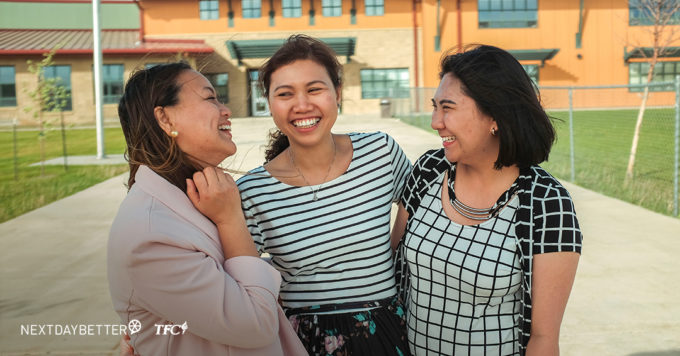
Community
“There was a time I was engaged to be married,” Isaiah Jimenez began. “I always wanted to fall in love with a girl and start a family.”
Part of it was because of his Christian faith. He comes from a Filipino and Hawaiian family, with a deep spiritual background.
But he got cold feet, and — away from the stress of being so close to what he wanted — he found steady ground shaping surfboards. It is common to surf and be around boards in his native Kauai, Hawaii. While being on the water itself is not his style — “the sport is kinda difficult,” he said with a laugh — his community lauds him for designing, shaping and sanding.
“I guess God saw so much potential in me, and pushed me that way,” he said. He was introduced to Next Day Better by one of his customers, who would go on to become the current Kauai mayor. His work is known around town, and at the end of the day, he works for his community. “I’m just a simple local boy,” he said.
He has kept this hobby up for 10 years now, without any signs of stopping. “It’s part of my walk.”
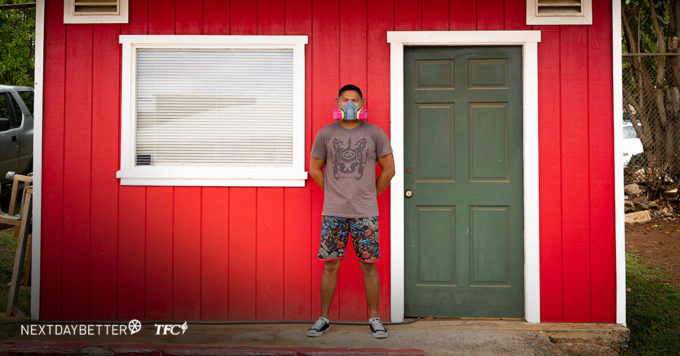
Freedom
Kalaya’an Mendoza took on his name when he went to Beijing to throw off authorities. He was followed by them anyway, and enjoyed a Coke so his tail could imitate him and drink one too. After protesting for Tibet’s freedom and getting deported for good, his only remorse is that he would have liked to visit southern China.
His “Intersections” episode confronts the homophobia he faced as a Catholic kid growing up in San Jose — something he says would not happen today; “the kids are too woke” — but I prodded him about his conversion to Buddhism.
The church he grew up with demanded his loyalty and goodness, but allowed microaggressions like “bakla” — a pre-Westernization third gender now used to derogotize him as less of a man — and “faggot” slide. When he started learning about Buddhism, it taught him compassion, including for himself. “It kind of resonated with my baby activist self,” he said.
He has put these ideas into his ventures for human rights, having been to Ferguson, Myanmar, Standing Rock and among the Maori in New Zealand as a grassroots organizer. “I like to see myself as someone who walks alongside,” he clarified. “Coaching and holding space.”
“What is the world you’re trying to build?” he asked himself through those years. Walking forward, he just wants to leave it better than when he came into it.
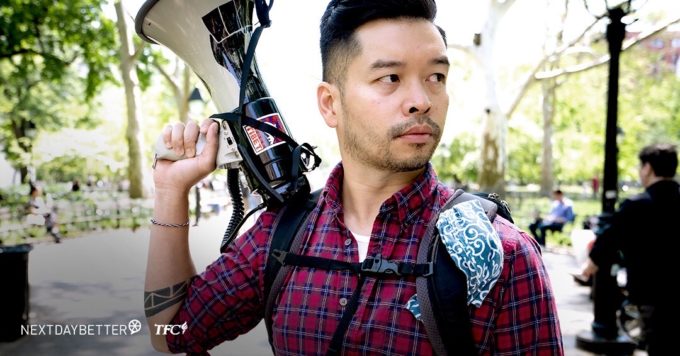
It was partially because of the honest way he spoke, partially because we were in my stomping grounds in Queens, that I asked, frankly, “What do you want to see in how media covers Filipinos in America?” After watching each episode and speaking to half of its subjects, I was more confused than ever as to how to cover this demographic.
The reason, Mendoza answered, is: “We are not a monolith.”
“Intersections” is available on NextDayBetter’s YouTube channel, with episodes released throughout the month of October. It was launched in partnership with TFC, the global multi-platform subscription network of leading Filipino media and entertainment company ABS-CBN.

